Transcription of Package ‘lavaan’ - R
1 Package lavaan '. May 13, 2020. Title Latent Variable Analysis Version Description Fit a variety of latent variable models, including confirmatory factor analysis, structural equation modeling and latent growth curve models. Depends R(>= ). Imports methods, stats4, stats, utils, graphics, MASS, mnormt, pbivnorm, numDeriv License GPL (>= 2). LazyData yes ByteCompile true URL NeedsCompilation no Author Yves Rosseel [aut, cre] (< >), Terrence D. Jorgensen [aut] (< >), Daniel Oberski [ctb], Jarrett Byrnes [ctb], Leonard Vanbrabant [ctb], Victoria Savalei [ctb], Ed Merkle [ctb], Michael Hallquist [ctb], Mijke Rhemtulla [ctb], Myrsini Katsikatsou [ctb], Mariska Barendse [ctb], Florian Scharf [ctb]. Maintainer Yves Rosseel Repository CRAN. Date/Publication 2020-05-13 16:40:02 UTC. R topics documented: bootstrapLavaan .. 3. 1. 2 R topics documented: cfa .. 5.. 7.. 8. estfun .. 9. FacialBurns.
2 10. fitMeasures .. 11. getCov .. 12. growth .. 13. HolzingerSwineford1939 .. 16. InformativeTesting .. 17. InformativeTesting methods .. 20. inspectSampleCov .. 23. lavaan .. 24. lavaan -class .. 26. lavaan -deprecated .. 29. lavaanList .. 30. lavaanList-class .. 32. lavCor .. 33. lavExport .. 35. lavInspect .. 36. lavListInspect .. 43. lavMatrixRepresentation .. 46. lavNames .. 47. lavOptions .. 48. lavPredict .. 55. lavResiduals .. 57. lavTables .. 59. lavTablesFitCp .. 61. lavTestLRT .. 63. lavTestScore .. 64. lavTestWald .. 67. lav_constraints .. 68. lav_func .. 69. lav_matrix .. 70. lav_model .. 74. lav_partable .. 75.. 78. modificationIndices .. 84. mplus2lavaan .. 86.. 87. parameterEstimates .. 88. parTable .. 90. PoliticalDemocracy .. 91. sem .. 92. simulateData .. 94. standardizedSolution .. 97. varTable .. 99. Index 101. bootstrapLavaan 3. bootstrapLavaan Bootstrapping a lavaan Model Description Bootstrap the LRT, or any other statistic (or vector of statistics) you can extract from a fitted lavaan object.
3 Usage bootstrapLavaan(object, R = 1000L, type = "ordinary", verbose = FALSE, FUN = "coef", warn = -1L, = FALSE, parallel = c("no", "multicore", "snow"), ncpus = 1L, cl = NULL, iseed = NULL, = NULL, ..). bootstrapLRT(h0 = NULL, h1 = NULL, R = 1000L, type=" ", verbose = FALSE, = FALSE, = "no", = 500L, = , warn = -1L, parallel = c("no", "multicore", "snow"), ncpus = 1L, cl = NULL, iseed = NULL). Arguments object An object of class lavaan . h0 An object of class lavaan . The restricted model. h1 An object of class lavaan . The unrestricted model. R Integer. The number of bootstrap draws. type If "ordinary" or "nonparametric", the usual (naive) bootstrap method is used. If " ", the data is first transformed such that the null hypothesis holds exactly in the resampling space. If "yuan", the data is first transformed by combining data and theory (model), such that the resampling space is closer to the population space.
4 If "parametric", the parametric bootstrap approach is used; currently, this is only valid for continuous data following a multivariate normal distribution. See references for more details. FUN A function which when applied to the lavaan object returns a vector containing the statistic(s) of interest. The default is FUN="coef", returning the estimated values of the free parameters in the model.. Other named arguments for FUN which are passed unchanged each time it is called. verbose If TRUE, show information for each bootstrap draw. warn Sets the handling of warning messages. See options. Not used for now. If TRUE, return the LRT values as an attribute to the pvalue. parallel The type of parallel operation to be used (if any). If missing, the default is "no". 4 bootstrapLavaan ncpus Integer: number of processes to be used in parallel operation: typically one would chose this to the number of available CPUs.
5 Cl An optional parallel or snow cluster for use if parallel = "snow". If not sup- plied, a cluster on the local machine is created for the duration of the bootstrapLavaan or bootstrapLRT call. iseed An integer to set the seed. Or NULL if no reproducible seeds are needed. To make this work, make sure the first RNGkind() element is "L'Ecuyer-CMRG". You can check this by typing RNGkind() in the console. You can set it by typing RNGkind("L'Ecuyer-CMRG"), before the boostrap functions are called. Only used if type="yuan". Allows one to do the Yuan bootstrap under the hypothesis that the population RMSEA equals a specified value. If "standard" the genuine double bootstrap is used to compute an additional set of plug-in p-values for each boostrap sample. If "FDB", the fast double bootstrap is used to compute second level LRT-values for each bootstrap sample. If "no", no double bootstrap is used.
6 The default is set to "FDB". Integer. The number of bootstrap draws to be use for the double bootstrap. The significance level to compute the adjusted alpha based on the plugin p- values. Details The FUN function can return either a scalar or a numeric vector. This function can be an existing function (for example coef) or can be a custom defined function. For example: myFUN <- function(x) {. # require( lavaan ). modelImpliedCov <- fitted(x)$cov vech(modelImpliedCov). }. If parallel="snow", it is imperative that the require( lavaan ) is included in the custom function. Author(s). Yves Rosseel and Leonard Vanbrabant. Ed Merkle contributed Yuan's bootstrap. Improvements to Yuan's bootstrap were contributed by Hao Wu and Chuchu Cheng. References Bollen, K. and Stine, R. (1992) Bootstrapping Goodness of Fit Measures in Structural Equation Models. Sociological Methods and Research, 21, 205 229.
7 Yuan, , Hayashi, K., & Yanagihara, H. (2007). A class of population covariance matrices in the bootstrap approach to covariance structure analysis. Multivariate Behavioral Research, 42, 261 281. cfa 5. Examples # fit the Holzinger and Swineford (1939) example <- ' visual =~ x1 + x2 + x3. textual =~ x4 + x5 + x6. speed =~ x7 + x8 + x9 '. fit <- cfa( , data=HolzingerSwineford1939, se="none"). # get the test statistic for the original sample <- fitMeasures(fit, "chisq"). # bootstrap to get bootstrap test statistics # we only generate 10 bootstrap sample in this example; in practice # you may wish to use a much higher number <- bootstrapLavaan(fit, R=10, type=" ", FUN=fitMeasures, "chisq"). # compute a bootstrap based p-value <- length(which( > ))/length( ). cfa Fit Confirmatory Factor Analysis Models Description Fit a Confirmatory Factor Analysis (CFA) model. Usage cfa(model = NULL, data = NULL, ordered = NULL, = NULL, = NULL, = NULL, = NULL, = NULL, group = NULL, cluster = NULL, constraints = "", = NULL, NACOV = NULL.)
8 Arguments model A description of the user-specified model. Typically, the model is described using the lavaan model syntax. See for more information. Alter- natively, a parameter table (eg. the output of the lavaanify() function) is also accepted. data An optional data frame containing the observed variables used in the model. If some variables are declared as ordered factors, lavaan will treat them as ordinal variables. 6 cfa ordered Character vector. Only used if the data is in a Treat these variables as ordered (ordinal) variables, if they are endogenous in the model. Importantly, all other variables will be treated as numeric (unless they are declared as or- dered in the ) Since , ordered can also be logical. If TRUE, all observed endogenous variables are treated as ordered (ordinal). If FALSE, all observed endogenous variables are considered to be numeric (again, unless they are declared as ordered in the ).
9 A variable name in the data frame containing sampling weight information. Cur- rently only available for non-clustered data. Depending on the option, these weights may be rescaled (or not) so that their sum equals the num- ber of observations (total or per group). Currently only available if estimator is ML in combination with robust standard errors and a robust test statistic. By default, the estimator will be "MLR". Numeric matrix. A sample variance-covariance matrix. The rownames and/or colnames must contain the observed variable names. For a multiple group anal- ysis, a list with a variance-covariance matrix for each group. A sample mean vector. For a multiple group analysis, a list with a mean vector for each group. Vector of sample-based thresholds. For a multiple group analysis, a list with a vector of thresholds for each group. Number of observations if the full data frame is missing and only sample mo- ments are given.
10 For a multiple group analysis, a list or a vector with the number of observations for each group. group Character. A variable name in the data frame defining the groups in a multiple group analysis. cluster Character. A (single) variable name in the data frame defining the clusters in a two-level dataset. constraints Additional (in)equality constraints not yet included in the model syntax. See for more information. A user provided weight matrix to be used by estimator "WLS"; if the estima- tor is "DWLS", only the diagonal of this matrix will be used. For a multiple group analysis, a list with a weight matrix for each group. The elements of the weight matrix should be in the following order (if all data is continuous): first the means (if a meanstructure is involved), then the lower triangular elements of the covariance matrix including the diagonal, ordered column by column. In the categorical case: first the thresholds (including the means for continuous vari- ables), then the slopes (if any), the variances of continuous variables (if any), and finally the lower triangular elements of the correlation/covariance matrix excluding the diagonal, ordered column by column.
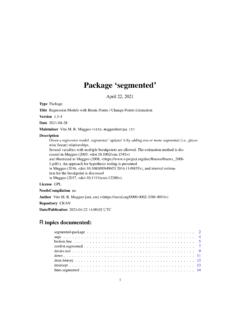
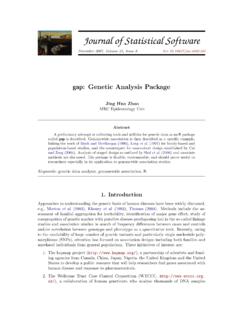
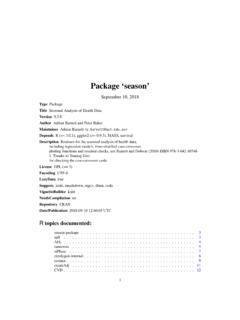
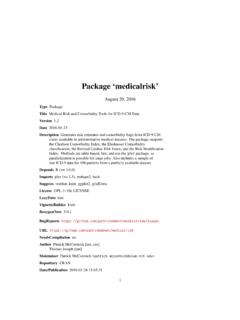
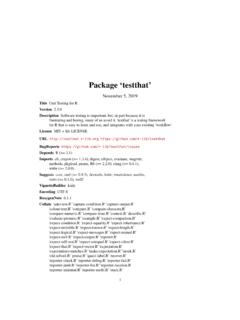
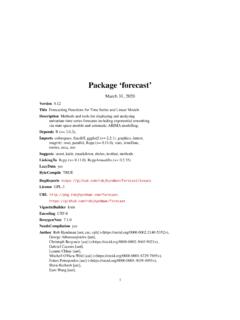
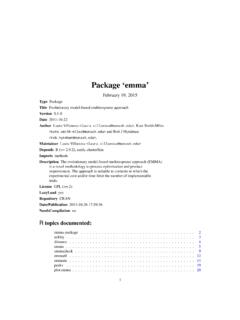
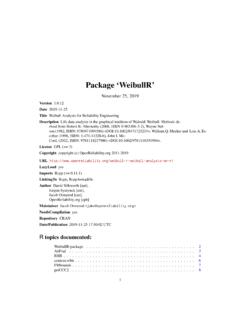
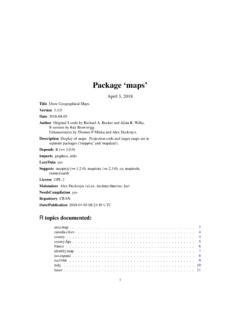
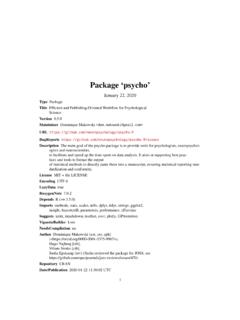



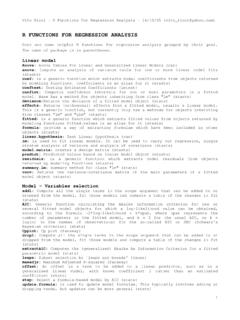

![[TE] Treatment Effects](/cache/preview/d/7/5/a/e/0/8/3/thumb-d75ae08369de58a52c8a719f5f924f80.jpg)